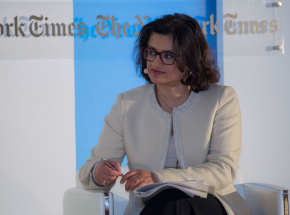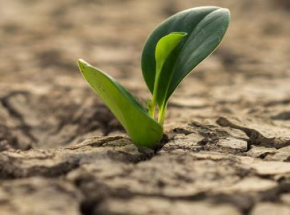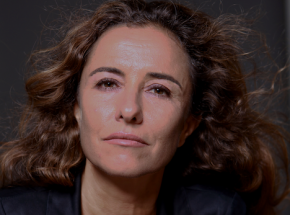- About AUP
- History of AUP
- Mission & Core Values
- Vision and Leadership
- AUP Recognition
- Alumni Success
- Campus Development
- Arts at AUP
- Policies & Guidelines
- Academics
- Undergraduate
- Graduate Programs
- MA in Diplomacy and International Law
- MA in Global Communications
- MSc in Human Rights and Data Science
- MA in International Affairs
- MA in International Affairs, Conflict Resolution, and Civil Society Development
- MSc in International Management
- MSc in Strategic Brand Management
- Find Your Thesis Advisor
- Previous Programs
- Cultural Program
- Faculty
- Summer School
- Research Centers
- The Center for Critical Democracy Studies
- Upcoming Events
- Research Projects
- Fellows’ Publications
- Publishing
- Curriculum
- Community
- Visiting Scholars
- CCDS Highlights
- Atelier de Théorie Politique – Paris
- Critical Theory 101: Future Directions and New Challenges
- Martti Koskenniemi on “The Law of International Society: A Road not Taken”
- Academic Freedom Symposium
- Tocqueville Colloque 2023
- Violent Turns Conference
- Degenerations of Democracy
- DEMOS21 Inaugural Event
- What Demos for the 21st Century?
- The Paris Centennial Conference
- Justice Stephen Breyer
- Civic Jazz - The Launch of the Center
- Past Events
- FR
- The Center for Writers and Translators
- The George and Irina Schaeffer Center for the Study of Genocide, Human Rights and Conflict Prevention
- The Joy and Edward Frieman Environmental Science Center
- The Center for Media, Communication & Global Change
- The Center for Critical Democracy Studies
- Departments
- Academic Resources
- Academic Affairs
- Academic Calendar
- Academic Resource Center
- Library
- Registrar's Office
- Teaching and Learning Center
- Employer Network
- Accessibility & Accommodation Services
- AI@AUP: A Campus-Level Initiative
- Quai D'Orsay Learning Commons
- Paris as Classroom
- ACE Center
- Admissions
- Student Life
- Campus
- Student Leadership & Involvement
- Paris
- Support Services
- Student Development Help Desk
- Student Accounting Services
- Student Immigration Services
- Student Grievance Procedure
- Diversity and Inclusion
- Health & Well-being
- Digital Student Handbook
- News
- Events
- AUP Giving
- Housing Offer for 2024-2025
- IT Services
- Alumni
- About AUP
- History of AUP
- Mission & Core Values
- Vision and Leadership
- AUP Recognition
- Alumni Success
- Campus Development
- Arts at AUP
- Policies & Guidelines
- Academics
- Undergraduate
- Graduate Programs
- MA in Diplomacy and International Law
- MA in Global Communications
- MSc in Human Rights and Data Science
- MA in International Affairs
- MA in International Affairs, Conflict Resolution, and Civil Society Development
- MSc in International Management
- MSc in Strategic Brand Management
- Find Your Thesis Advisor
- Previous Programs
- Cultural Program
- Faculty
- Summer School
- Research Centers
- The Center for Critical Democracy Studies
- Upcoming Events
- Research Projects
- Fellows’ Publications
- Publishing
- Curriculum
- Community
- Visiting Scholars
- CCDS Highlights
- Atelier de Théorie Politique – Paris
- Critical Theory 101: Future Directions and New Challenges
- Martti Koskenniemi on “The Law of International Society: A Road not Taken”
- Academic Freedom Symposium
- Tocqueville Colloque 2023
- Violent Turns Conference
- Degenerations of Democracy
- DEMOS21 Inaugural Event
- What Demos for the 21st Century?
- The Paris Centennial Conference
- Justice Stephen Breyer
- Civic Jazz - The Launch of the Center
- Past Events
- FR
- The Center for Writers and Translators
- The George and Irina Schaeffer Center for the Study of Genocide, Human Rights and Conflict Prevention
- The Joy and Edward Frieman Environmental Science Center
- The Center for Media, Communication & Global Change
- The Center for Critical Democracy Studies
- Departments
- Academic Resources
- Academic Affairs
- Academic Calendar
- Academic Resource Center
- Library
- Registrar's Office
- Teaching and Learning Center
- Employer Network
- Accessibility & Accommodation Services
- AI@AUP: A Campus-Level Initiative
- Quai D'Orsay Learning Commons
- Paris as Classroom
- ACE Center
- Admissions
- Student Life
- Campus
- Student Leadership & Involvement
- Paris
- Support Services
- Student Development Help Desk
- Student Accounting Services
- Student Immigration Services
- Student Grievance Procedure
- Diversity and Inclusion
- Health & Well-being
- Digital Student Handbook
- News
- Events
- AUP Giving
- Housing Offer for 2024-2025
- IT Services
- Alumni
Paris as Classroom
Paris as Classroom
Arab World Institute
Spotlight On a Class Visit
In Fall semester, 2020, a group of students taking Politics of Modern Middle Eastern Art participated in a class trip to Paris’s Arab World Institute, known in French as l’Institut du monde arabe. Opened in 1987, the Arab World Institute seeks to provide a cultural bridge between France, Europe and the Arab world by opening a dialogue between these regions and developing cultural projects alongside the region’s artists, institutions and thinkers.
“Paris is today a vibrant city for not only Western art but also Asian, African and Middle Eastern art,” says Sultan Sooud Al-Qassemi ’98, a visiting professor and AUP alumnus who taught the class in question. Politics of Middle Eastern Art explored the interplay between artistic and political movements in the Arab world from the beginning of the 20th century. “The Arab World Institute sums up so much of what the class was about with respect to the representation of non-Western art,” says Al-Qassemi. “I must have been two dozen times as a student. At the time, I’d never seen the Arab world presented holistically.”
It was really interesting, because art can tell us a lot about the sociopolitical situation in the region and how that has shaped cultural production.
The trip to the Arab World Institute was a unique opportunity for students to appreciate contemporary Middle Eastern art while taking a unified approach to the region and appreciating its cultural ties to France. It offered students the chance to see many of the artworks discussed in the classroom first-hand instead of on screen. “It's essential to do that because you develop a sense of familiarity and intimacy with the works,” says Al-Qassemi.
The contemporary aspect of the artworks on display particularly appealed to Maria Karkour, a senior and transfer student from the American University of Beirut: “It was really interesting, because art can tell us a lot about the sociopolitical situation in the region and how that has shaped cultural production.” She cites Au-delà de la mer, an exhibit by French-Lebanese artist François Sargologo, as one of her personal highlights. The series consists of photos of Beirut in the 1980s during the Lebanese Civil War and includes accompanying comments from the artist describing his sensory experiences while taking the photo. “He merges the photos with a sense of nostalgia that really brings them to life,” says Karkour. “Because I lived through the explosion in Beirut on August 4, 2020, the exhibition really resonated with me.”
After viewing the museum’s temporary collections, the attending students also met with the Institute’s Director, Jack Lang – a prominent French cultural figure and former politician – as well as art collector Claude Lemand, who has donated over 1,300 works to the museum. Karkour notes the importance of Lemand’s artistic philanthropy: “His collection conveys Middle Eastern art in the way it should be conveyed – not with a Western gaze.”
The opportunity to approach subjects with an international angle from a variety of different perspectives is a hallmark of studying at AUP, and Paris provides ample opportunity to visit museums, monuments and organizations that contextualize such international viewpoints. “It used to be special when I was a student,” says Al-Qassemi. “It’s even more special today.”
Related
-

Farah Nayeri ’84
Alumna
Read MoreFarah Nayeri ’84
Alumna
My professors had a great deal of influence on my trajectory.
-

Oslo Pax 2019
Student & Faculty Collaboration
Read MoreOslo Pax 2019
Student & Faculty Collaboration
Students attended a global climate gathering to discuss tangible solutions to environmental problems.
-

Leila Conners ’89
Alumna
Read MoreLeila Conners ’89
Alumna
I got exactly what I wanted out of the school: an international experience.




